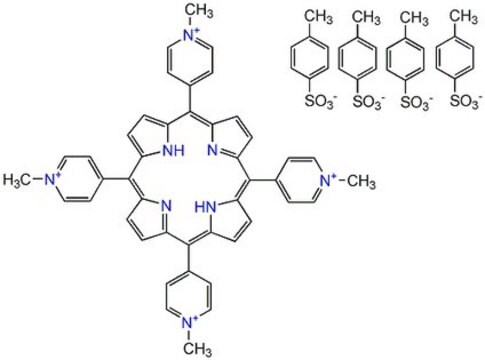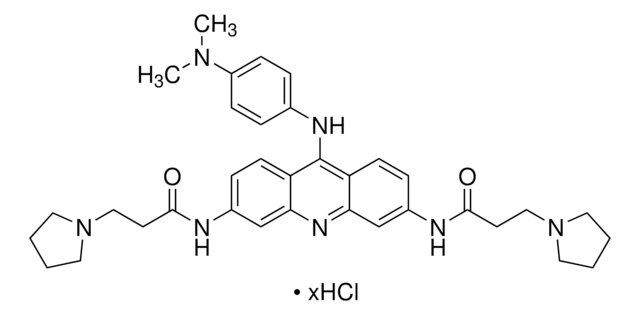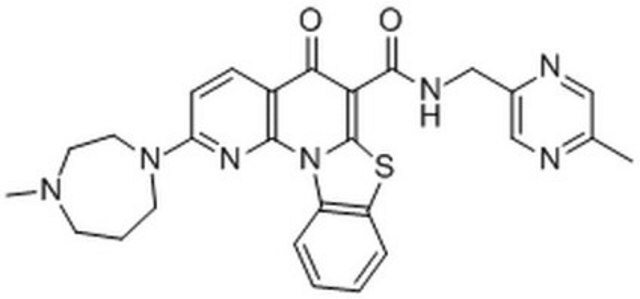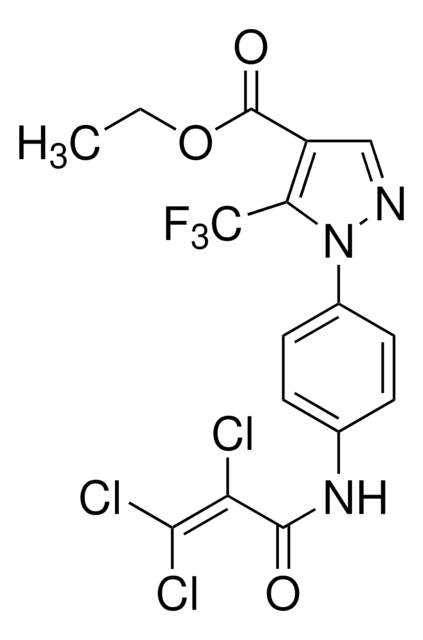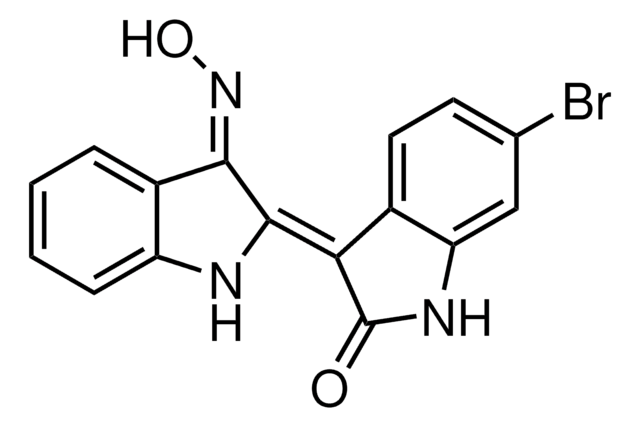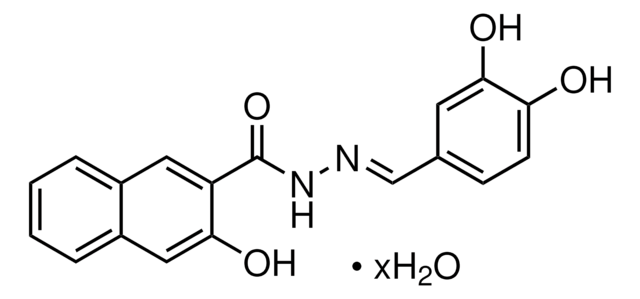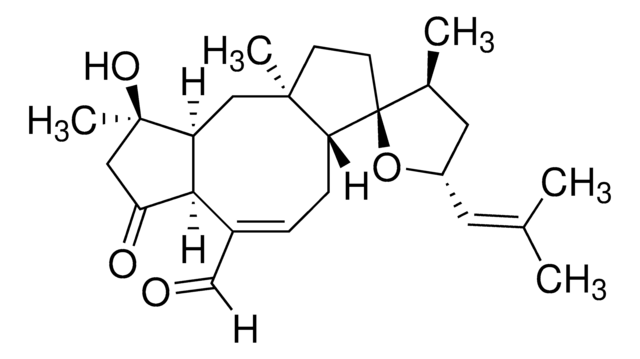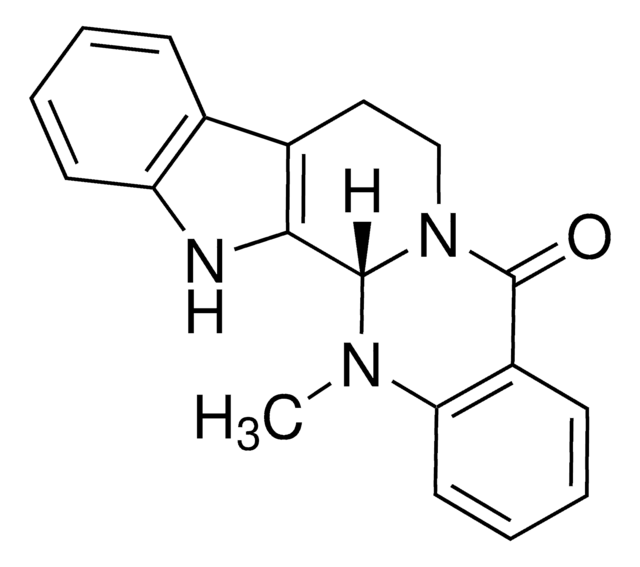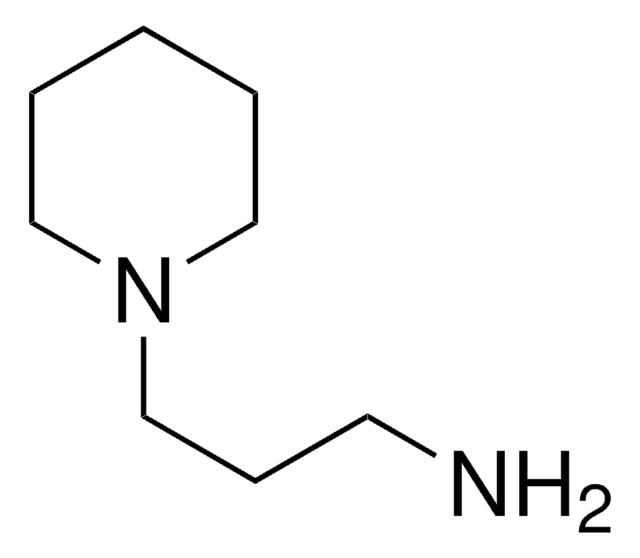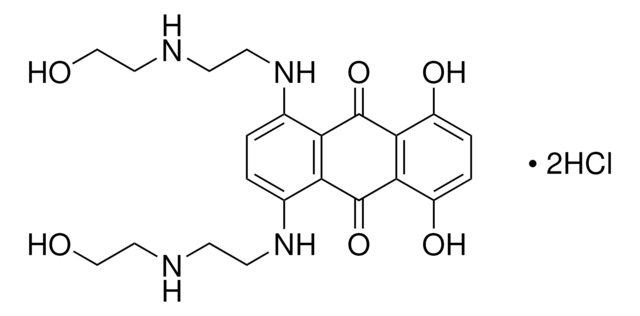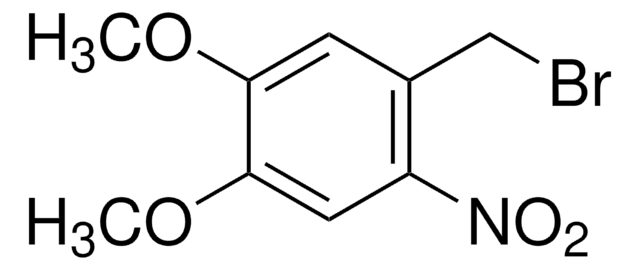SML2298
PhenDC3
≥97% (HPLC), powder, G-quadruplex ligand
Sinonimo/i:
3,3′-[1,10-Phenanthroline-2,9-diylbis(carbonylimino)]bis[1-methylquinolinium] 1,1,1-trifluoromethanesulfonate (1:2), Phen DC3, Phen-DC(3), Phen-DC3
About This Item
Prodotti consigliati
Nome del prodotto
PhenDC3, ≥97% (HPLC)
Saggio
≥97% (HPLC)
Stato
powder
Colore
white to beige
Solubilità
DMSO: 2 mg/mL, clear
Temperatura di conservazione
2-8°C
Stringa SMILE
O=C(NC1=CC2=CC=CC=C2[N+](C)=C1)C3=CC=C4C=CC5=CC=C(N=C5C4=N3)C(NC6=CC7=CC=CC=C7[N+](C)=C6)=O.O=S([O-])(C(F)(F)F)=O.O=S([O-])(C(F)(F)F)=O
InChI
1S/C34H24N6O2.2CHF3O3S/c1-39-19-25(17-23-7-3-5-9-29(23)39)35-33(41)27-15-13-21-11-12-22-14-16-28(38-32(22)31(21)37-27)34(42)36-26-18-24-8-4-6-10-30(24)40(2)20-26;2*2-1(3,4)8(5,6)7/h3-20H,1-2H3;2*(H,5,6,7)
PYJCATLYPXPYHF-UHFFFAOYSA-N
Applicazioni
- as a quadruplex (G4) ligand to study its effects on the binding of RNA quadruplex (rG4) to nucleolin (NCL)
- as a DNA/RNA G-quadruplexes (GQs) ligand to study its effects on the expression of double homeobox 4 (DUX4) gene
- as a G4 ligand to study its stability and selectivity towards pre-miR-92b rG4 complex and duplex DNA by fluorescence resonance energy transfer (FRET)-melting assay
Azioni biochim/fisiol
Codice della classe di stoccaggio
11 - Combustible Solids
Classe di pericolosità dell'acqua (WGK)
WGK 3
Punto d’infiammabilità (°F)
Not applicable
Punto d’infiammabilità (°C)
Not applicable
Scegli una delle versioni più recenti:
Certificati d'analisi (COA)
It looks like we've run into a problem, but you can still download Certificates of Analysis from our Documenti section.
Se ti serve aiuto, non esitare a contattarci Servizio Clienti
Possiedi già questo prodotto?
I documenti relativi ai prodotti acquistati recentemente sono disponibili nell’Archivio dei documenti.
I clienti hanno visto anche
Il team dei nostri ricercatori vanta grande esperienza in tutte le aree della ricerca quali Life Science, scienza dei materiali, sintesi chimica, cromatografia, discipline analitiche, ecc..
Contatta l'Assistenza Tecnica.